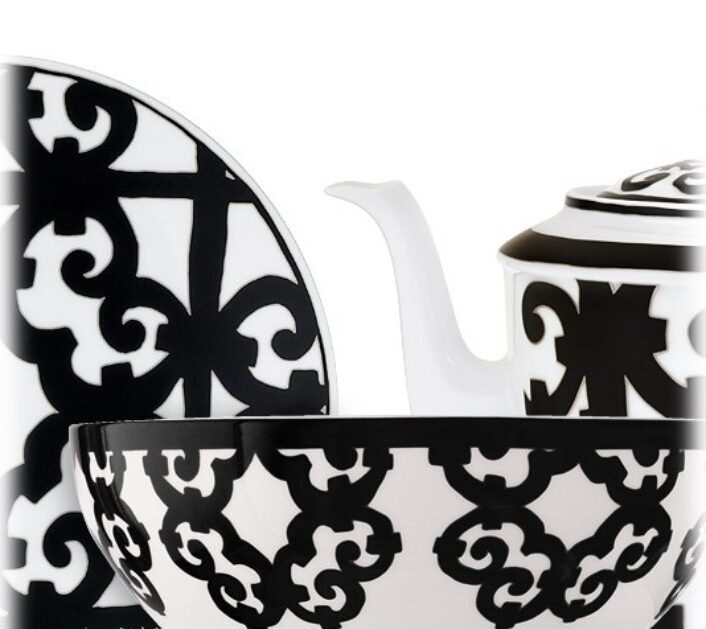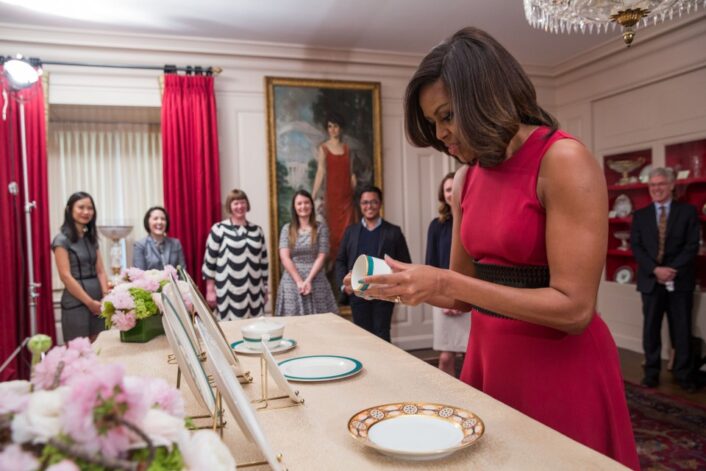Design
GIEN FAIENCERIE
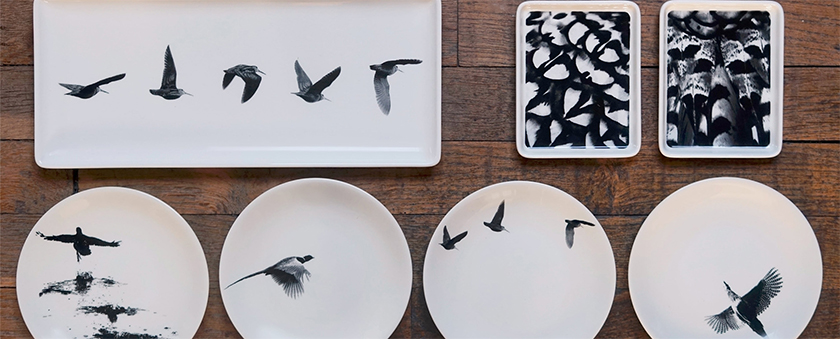
Plates from the Chambord Collection.
The plates are inspired by Georges Carillo’s wildlife photographs that highlight nature. The combination of black and white brings elegance to this collection. The animals are seemingly portrayed in motion. Furthermore, the dinner, soup, and dessert plates are underlined with a hand-painted black thread.
Image courtesy of: Gien
When people think of fine china, Gien instantly comes to mind. One of Europe’s leading faience manufacturers, it has long been a symbol of elegance and french styling. For over two centuries, artisans at Gien have used traditional crafting techniques… ones that have been used for centuries and are still in practice.
Gien Faiencerie still have 100% control of the entire production process from sourcing raw materials to making clay paste and slip, and finally, to producing the finished product. The company was first established in 1821 in the Loire Valley, in the middle of France. Thomas Hall, the founder, was eager to promote and expand fine English china in France. His idea worked!

Rambouillet dinner plate, “Pheasant”. This collection was commissioned by French President Rene Coty. The collection features animals and birds portrayed in a masculine tone. The original collection furnished the homes that were used for presidential hunts. Each piece shows the animals hunted and the hunting dogs.
The collection was designed by Jean Bertholle in 1955.
Dimensions are: 10.25″ in diameter.
Image courtesy of: The White Dogwood
Prior to founding Gien, Hall was involved with Montereau Faïencerie. He gave up his interest in the company in order to work on a project to revive the Paris Post aux Choux Faïencerie; at the time, this was the only faïencerie around Paris. Inspired by the English, it produced sophisticated pieces closely resembling silverware.
The Loire Valley has all the necessary properties to make faience: sand and water from the river to make clay paste and wood from the nearby Sologne forest to fill the kilns. In addition, at the time, the Loire river was a wonderful means for transporting goods.
Gien’s history is typically divided into six distinct timeframes. Gien’s first period, 1821-1850, was when Gien produced products that were tailored to the tastes and culture of the time. In other words, pure white faience on an elaborate form inspired by silverware or with a pattern in shades of one singular color and based in antiquity or romantic topics.
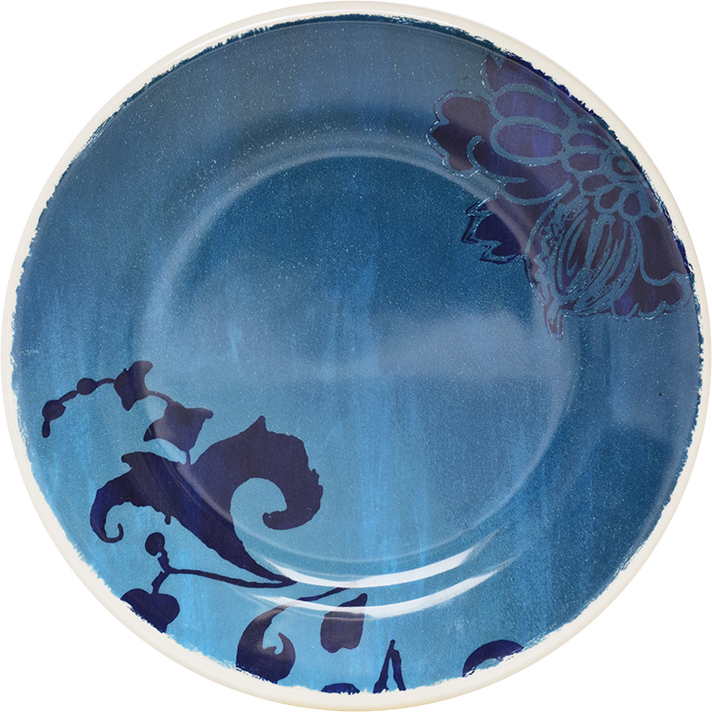
Indigo Collection, dessert plate (blue background).
Designed by the artist Brigitte de Bazelaire, who was inspired by the iconic Rouen 32 collection from Gien’s 19th-century archives that featured lilies, spirals, and pomegranate flowers. The collection is full of bold and abstract undertones that shift into shades of “inky blues.”
Image courtesy of: Gien
In the beginning, the factory had a tough time due to both financial difficulties and quality drawbacks in production. Slowly, the process was fine-tuned; the company’s second stage took place between 1850-1914.
This was considered Gien’s “Golden Age”; new developments helped the company make improvements that were quickly acknowledged by the industry. During this time, Gien won many awards and received numerous accolades. This was a time when Gien followed current trends and tastes. They drew inspiration from the different fashions that marked the history of faience and porcelain over time, Italian faience and Far East designs for example.
Following World War I, Gien focused on industrializing and modernizing their factory. Perhaps most importantly, “tunnel” kilns with a 5-day firing cycle were installed. After World War II, Gien was forced to file for bankruptcy as their surge was not effective because of complacent designs. As a result, they were not able to be competitive and filed for bankruptcy in 1984.
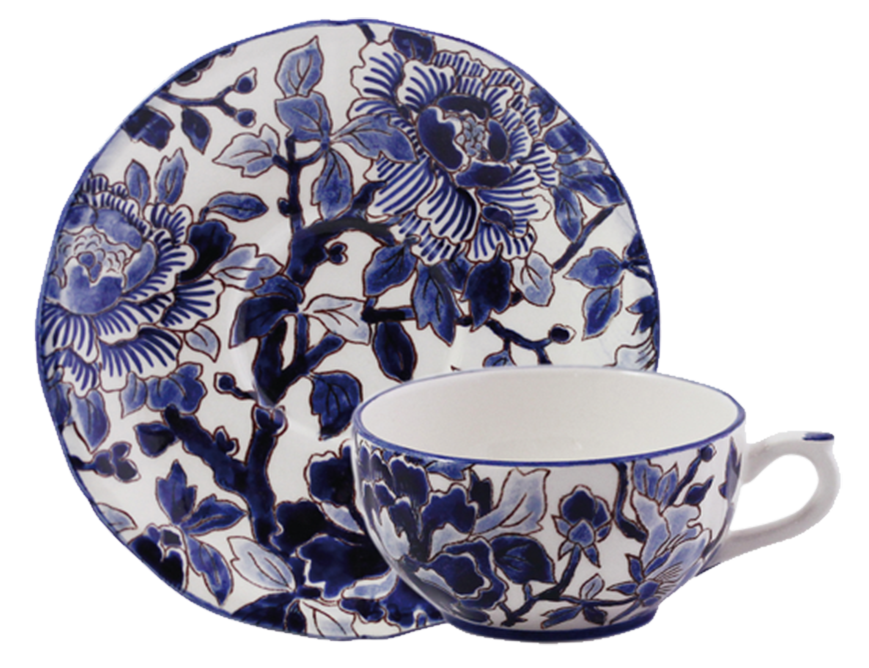
“Pivoines Bleues Collection.” tea cup and saucer.
One of two hand-painted collections by Gien, inspired by the 1875 Pivoines Bleues Collection from the archives. This collection pays homage to flora in vivid shades of blue with a nod to the elegant traditions of Japanese wares.
Image courtesy of: FX Dougherty
For the next thirty years, 1984-2014, Pierre Jeufroy implemented a radical restructuring plan and set an objective of regaining a substantial share of the market’s high-end segment. Continuing to draw inspiration from Gien’s archival collection, he starts a museum in 1985 and searches for new designers and artists to bring a fresh approach to the brand’s image. This is the path that leads artists such as Jean Cortot and Paco Rabanne to work with Gien.
In 2014, the company was taken over by Yves de Talhouet and Pascal d’Halluin. The men’s objectives were to keep Gien’s quality and tradition alive, as well as to highlight contemporary talent and implement new distributions of export.
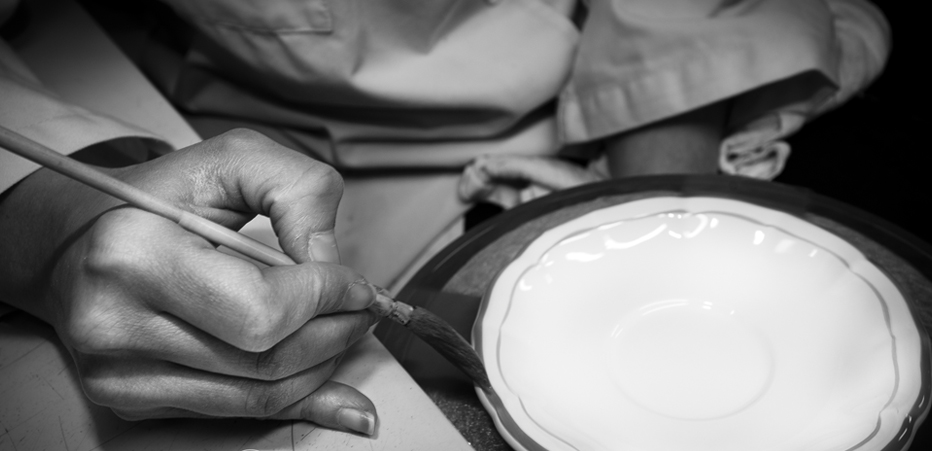
Part of the production process of a collection that was originally produced by Gien for the Palace of Versailles.
Image courtesy of: Chateau de Versailles Boutique
Each piece produced passes through the hands of thirty individual master craftsmen and craftswomen with roughly twenty years of practice apiece.
The Collections, with their amazing colors and shapes, are a cumulation of fifty different patterns and over 3,000 item references that range from plates to hand-painted pieces. The finished products are created from both archival material and material sketched by contemporary artists.
Gien is set on bringing elegance and happiness to each table… not an easy task, but one which they continue to succeed in doing beautifully!

